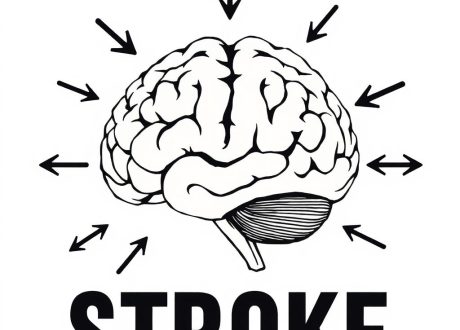Podcast: Play in new window | Download
“This learning material is sourced from Emergency Medicine Cases and has been published here with permission as per creative commons copyright”
Topics in this EM Quick Hits podcast
Ian Chernoff on traumatic coronary artery dissection (1:05)
Anand Swaminathan on proper use of insulin in DKA and in hyperkalemia (15:50)
Brit Long & Hans Rosenberg on mesenteric ischemia pearls and pitfalls in diagnosis and management (21:47)
Dave Jerome on managing exercise-associated hyponatremia and heat illness (33:47)
Jesse McLaren on the Queen of Hearts AI model in helping identify occlusion MI on ECG (50:50)
Podcast production, editing and sound design by Anton Helman
Podcast written summary & blog post by Brandon Ng, edited by Anton Helman, September, 2024
Cite this podcast as: Helman, A. Chernoff, I. Swaminathan, A. Long, B. Rosenberg, H. Jerome, D. McLaren, J. EM Quick Hits 59 Traumatic Coronary Artery Dissection, Proper Use of Insulin, Mesenteric Ischemia, Exercise Associated Hyponatremia, AI for OMI. Emergency Medicine Cases. September, 2024. https://emergencymedicinecases.com/em-quick-hits-september-2024/. Accessed September 15, 2024.
Traumatic Coronary Artery Dissection – Best of University of Toronto EM

Traumatic coronary artery dissection is a rare, but often fatal injury that is challenging to diagnose and requires specific knowledge of it’s clinical features. Clinical clues for traumatic coronary artery dissection include:
- History of blunt force chest trauma ranging from low to high energy mechanisms (direct blow to the chest, high speed motor vehicle crash)
- Possible delayed presentation by many hours to days to weeks
- Typical angina symptoms in young patient with no cardiac risk factors
- Wall motion abnormalities on cardiac PoCUS
- Elevated troponin
- ECG ischemic changes
Why is traumatic coronary artery dissection difficult to diagnose?
- Cardiac injuries ranging from contusions to dissections occur in 5-15% of blunt chest trauma; traumatic coronary artery dissection comprises a small proportion of these patients
- Symptoms may not present for days to weeks after inciting event
- May occur even with low energy mechanisms
- Most often occur in young patients who are not at risk for cardiac ischemia – 82% under age 45 and have been reported in as young as age 14
- Often overlooked due to low index of suspicion in the context of other concurrent traumatic injuries
Traumatic coronary artery dissection vs SCAD (Sontaneous Coronary Artery Dissection)
- There are some corollaries with SCAD and traumatic CAD in that both have historically been under-recognized;h owever, whereas SCAD has now belatedly been recognized as the leading cause of MI in women under age 50, traumatic CAD continues to be under appreciated
Workup of traumatic coronary artery dissection
- Patients complaining of chest pain after sustaining blunt chest trauma should undergo prompt cardiovascular workup
- Current Eastern Association for the Surgery of Trauma (EAST) guidelines propose an ECG as well as cardiac markers should be performed on any patient in which one suspects blunt cardiac injury; doing so appears practitioner dependent
A key pitfall in chest trauma is assuming that a borderline ECG and positive troponin is due only to cardiac contusion, which does not warrant activation of the cath lab. A borderline ECG and positive troponin could very well be due to traumatic coronary artery dissection which does require cath lab activation.
Bottom line => Consider traumatic coronary artery dissection in a young person with a history of recent chest trauma followed hours to weeks later with anginal symptoms plus any combination of ECG changes , troponin elevation or PoCUS MI findings. Emergency cath lab activation is indicated in these patients.
Proper use of insulin in DKA and hyperkalemia
Proper use of insulin use in DKA
In DKA, insulin halts ketogenesis which closes the anion gap and normalizes the acidosis. Patients have low total body potassium deplete from osmotic diuresis despite lab reported normal serum potassium as acidosis from DKA shifts potassium out of cells. As such, insulin should be held until serum K+ levels return.
- If K+ >5.5 mEq/L -> start insulin
- If K+ 3.5-5.5 mEq/L -> start insulin and K+ repletion at the same time
- If K+ <3.5 mEq/L -> hold insulin, replete K+, and start insulin only after K+ becomes >3.5
- Insulin bolus dosing carries an increased risk of hypoglycemia and hypokalemia but does not close the gap or make the patient feel better faster; instead start with an insulin infusion at 0.1IU/kg/hr, or up to 0.14IU/kg/hr if the patient is very ill.
Proper use of insulin in hyperkalemia
In patient with hyperkalemia, to shift potassium, smaller doses of insulin (5 units instead of 10 units) is recommended as the lower dose is associated with lower rates of hypoglycemia. This is particularly important for those with impaired renal function as insulin is renally excreted.
Recognition and management of mesenteric ischemia peals and pitfalls
Mesenteric ischemia is defined by the presence of obstructed intestinal vascular flow. It is uncommon and occurs in 1 in 1,000 patients, but accounts for 1 in 100 cases of severe GI issues requiring hospitalization with mortality rates up to 50%.
There are 4 types of mesenteric ischemia with 4 different presentations and risk profiles
- Arterial embolism (up to 40%) – associated with embolic risk factors (e.g. Afib)
- Arterial thrombosis (up to 40%) – typically have ACS risk factors
- Venous thrombosis (5-15%) – associated with thrombotic risk factors: thrombophilia, trauma, malignancy
- Non-occlusive (up to 19%) – occurs in low-flow or shock states
The clinical features of mesenteric ischemia varies based on the type of ischemia
- Presentation varies based on type of ischemia, but most commonly includes generalized abdominal pain and may present with localized pain from transmural ischemia of the bowel wall.
- In acute occlusion (especially in the arterial embolism) -> sudden severe pain out of proportion in 75% of cases
- In chronic arterial or venous thrombosis -> worsening abdominal cramps when eating, with weight loss secondary to food aversion; 30% of patients will have nausea, vomiting, and diarrhea
- May present with peritonitis and septic shock with prolonged ischemia and bowel necrosis.
- Hematochezia occurs in late stages
- Non-occlusive mesenteric ischemia is challenging to diagnose as they are critically ill from other conditions (e.g. shock, severe dehydration, vasopressors, severe end organ damage) and may have altered mental status.
Lab work in mesenteric ischemia: understanding the role of lactate and D-dimer
- Leukocytosis
- Elevated Lactate: associated with poor prognosis and irreversible ischemia but low sensitivity and is often normal early in course of disease
- Metabolic acidosis
- Consider D-dimer in patients with thrombotic risk factors and sufficient suspicion: high sensitivity but non-specific
- Urine intestinal fatty acid binding protein (not widely available): sensitivity >90% and specificity >80%
Pitfall: do not rule out mesenteric ischemia base on a normal lactate as the it has poor sensitivity and is often normal early in the course of disease. Do not rely on labs alone to rule out mesenteric ischemia.
Triphasic CT is the imaging modality of choice for suspected mesenteric ischemia
- Findings include vascular filling defect, bowel wall edema, ascites, and stranding
- Late findings include pneumatosis intestinalis and free air from perforation
ED management of mesenteric ischemia
- Resuscitation: IV fluids to target euvolemia as patients often have significant 3rd spacing
- Broad spectrum antibiotics (e.g. Piperacillin/Tazobactam or Ceftriaxone and Metronidazole)
- Analgesics and antiemetics
- Consult General Surgery and Interventional Radiology early (some patients require laparotomy in the O.R. while others require emergency embolization by interventional radiology)
- For patients with hemodynamic instability or peritonitis -> emergent laparotomy
- For stable patients with no peritonitis -> anticoagulation with unfractionated heparin in consultation with general surgery
- For non-occlusive mesenteric ischemia, resuscitate and treat underlying cause of shock
- Avoid vasopressors as it may worsen gut ischemia
Bottom line => Mesenteric ischemia is an uncommon but high mortality illness whose presentation depends on the underlying pathophysiology/type of ischemia. There are no definitive lab tests available but lactate and D-dimer can help shift pre-test probability. Triphasic CT is the diagnostic test of choice. Stable patients usually require unfractionated heparin and consultation with both General Surgery and Interventional Radiology is recommended.
Exercise associated hyponatremia recognition and management
- EAH is defined as the presence of serum Na+ <135 mmol/L that presents within 24h of prolong physical activity.
- Primary mechanism: Excessive consumption of hypotonic fluids in the context of fluid and salt losses during prolonged physical activity.
- AVP/ADH secretion with EAH also associated with rhabdomyolysis – be sure to order a CK to screen for rhabdomyolysis
- Studies show that up to 50% of marathon runners have EAH but not all are symptomatic.
- Presentation of EAH ranges from asymptomatic to critically ill with brain coning; the majority of EAH cases are asymptomatic or mild.
- Minor EAH (typically serum Na 125-134 mmol/L) presents with: weakness, fatigue, irritability, headache, nausea, vomiting, dizziness, variable urine output, bloated feeling, and body weight gain.
- Except feelings of bloat and weight gain, EAH shares all other symptoms with heat illnesses.
- Moderate EAH: More intense symptoms and unable to tolerate food/fluids by mouth
- Severe EAH (serum Na <125 mmol/L):
- Cerebral edema and exercise associated hyponatremic encephalopathy with symptoms including altered mental status, seizures, coma.
- Non-cardiogenic pulmonary edema with associated respiratory symptoms.
- Signs of coning from the cerebral edema including decorticate posturing and single/bilateral blown pupils.
- Minor EAH (typically serum Na 125-134 mmol/L) presents with: weakness, fatigue, irritability, headache, nausea, vomiting, dizziness, variable urine output, bloated feeling, and body weight gain.
- Pay particular attention to temperature (to assess for heat illness) and CK to screen for rhabdomyolysis
Management of Exercise Associated Hyponatremia

- Commercial sport drinks are hypotonic contrary to popular belief and will not prevent EAH development during exercise.
- Consider observing patients for at least 60 minutes after cessation of exercise as there is a risk of delayed decompensation from continued water absorption in the GI tract from fluids consumed during the activity.
Identification of occlusion MI with the help of the Queen of Hearts AI model
The STEMI paradigm reorganized pre-hospital and EDs to prioritize ECGs and provide criteria that helps identify acute coronary occlusion. However, recent expert consensus from the American College of Cardiology warns that STEMI criteria miss a significant minority of patients with acute coronary occlusion. Conventional computer technology are also only trained to measures ST elevation in isolation, and as a result leads to false positives and negatives in identifying occlusion MI.
The Queen of Hearts AI (by © Powerful Medical) is an AI trained to identify occlusion MI (OMI) on ECG.
OMI = occluded or near occluded coronary artery without sufficient collateral circulation to prevent necrosis.
- A diagnosis that typically incorporates angiography, echo, troponin levels.
- ECG is not sensitive for non-occlusive MI.
There are several notable features of the “Queen of Hearts” AI.
- It is trained to identify OMI including true positive STEMI and false negative STEMI
- The AI is trained by world experts on ECG
- Studies published on the European Heart Journal of Digital Health – found a sensitivity of 81% (double of STEMI criteria) and a specificity of 94%
- The AI can explain how it interpreted the ECG by highlighting areas and leads of concerns
- It is important to consider pre-test and post-test likelihood for OMI when applying the AI tool
Bottom line => For ECG interpretation on OMI, the Queen of Hearts AI may be a useful adjunct but does not negate our need to interpret ECG and replace our clinical judgement.
Dr. McLaren’s HEARTS ECG Course to sharpen your ECG interpretation skills:










